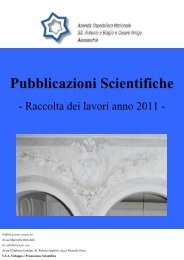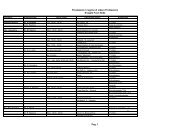Working Paper of Public Health Volume 2012 - Azienda Ospedaliera ...
Working Paper of Public Health Volume 2012 - Azienda Ospedaliera ...
Working Paper of Public Health Volume 2012 - Azienda Ospedaliera ...
Create successful ePaper yourself
Turn your PDF publications into a flip-book with our unique Google optimized e-Paper software.
<strong>Azienda</strong> <strong>Ospedaliera</strong> Nazionale“SS. Antonio e Biagio e Cesare Arrigo”<strong>Working</strong> <strong>Paper</strong> <strong>of</strong> <strong>Public</strong> <strong>Health</strong>nr. 7/<strong>2012</strong>radiology, etc.), the implementation in some countries <strong>of</strong> screening programs havefinancial barriers associated to cultural resistance and should be important a highereducational efforts to reduce these effects <strong>of</strong> friction. In fact, Mittra (2011) argues thatscreening program can be successfully implemented in developing countries if, a priori,there is a high level <strong>of</strong> compliance based on a high level <strong>of</strong> awareness. Developingcountries have several socio-economic problems and it is difficult to select, consideringthe available resources, the apt examination for detection <strong>of</strong> breast cancer. Hence,although the importance <strong>of</strong> early detection, breast cancer management in some countrieswith low economic resource countries is affected by several factors. The lack <strong>of</strong> regionalpathology services, medical oncologists and surgeons play a vital role for detecting breastcancer and applying apt anticancer treatments (Saghir et al., 2011). In general, countrieshave different results in terms <strong>of</strong> incidence also due to early detection and screeningprograms associated to socio-economic-cultural factors.Although the incidence <strong>of</strong> breast cancer in women tends to be higher in richer countries, asshowed by empirical evidence, the higher R&D investment fosters vital scientific advances inthe research fields <strong>of</strong> genomics and cell biology that have been spurring more effective andless toxic treatments for breast and other cancers based on targeted therapies for patients (cf.Coccia, <strong>2012</strong>). These new scientific and technological trajectories have been generating arevolution in clinical practice across countries to treat and we hope to cure this and othertypologies <strong>of</strong> cancer in not-to-distant future.ReferencesAgarwal G., Pradeep P.V., Aggarwal V., Yip C.H., Cheung P.S. (2007) “Spectrum <strong>of</strong> breastcancer in Asian women”, World J Surg., vol. 31, n. 5, pp. 1031-1040.Antonova L., Aronson K., Mueller C. R. (2011) “Stress and breast cancer: fromepidemiology to molecular biology” Breast Cancer Research, vol. 13:208Barnes B., Steindorf K., Hein R., Flesch-Janys D., Chang-Claude J. (2011), “Populationattributable risk <strong>of</strong> invasive postmenopausal breast cancer and breast cancer subtypes formodifiable and non-modifiable risk factors” , Cancer Epidemiology, vol. 35, n. 4, pp. 345–352.Botha JL, Bray F, Sanilac R, Parkin DM. (2003) “Breast cancer incidence and mortalitytrends in 16 European countries”, Eur J Cancer, vol. 39, n. 12, pp. 1718-1729.18



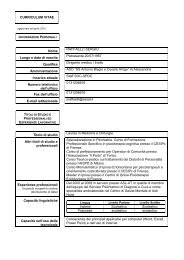
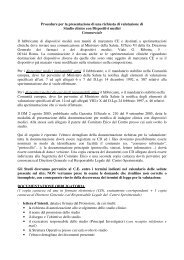

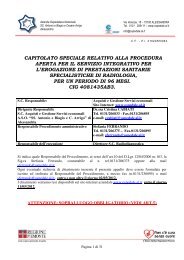
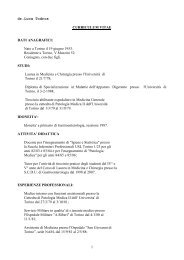
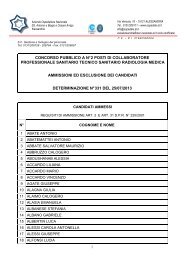

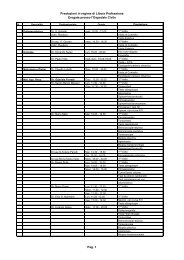


![[torino - 1] lastampa/urc/01 ... 26/10/09 - Azienda ...](https://img.yumpu.com/44058002/1/190x32/torino-1-lastampa-urc-01-26-10-09-azienda-.jpg?quality=85)

